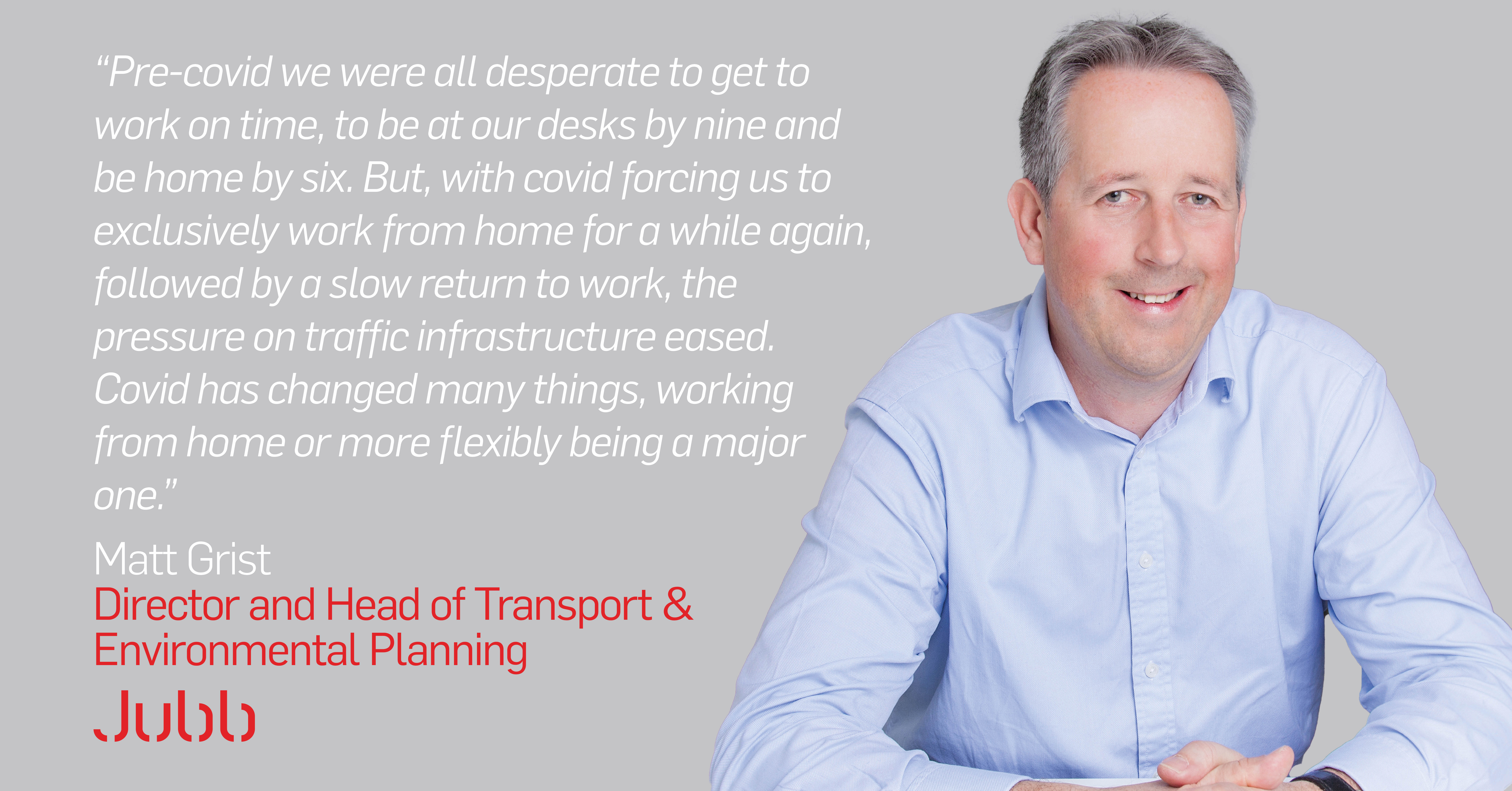
In the world of transport planning one of our regular tasks is to look at proposed developments and calculate the additional demand on the existing transport networks – cars, pedestrians, cyclists and bus users, and prove there is capacity in the system to handle the extra demand.
Traditionally the focus or priority has always been on cars. Recently we worked on a large development. We needed to be sure that the existing transport infrastructure could take additional use from all those living, working and visiting the proposed site. Again the focus was on car usage and the main concern was increased congestion at junctions.
This concern over congestion is not unique. As a nation, on a small island, we are almost obsessed with the traffic and being ‘held up’ by congestion, even though we are all a small part of the problem. We don’t want to wait, we don’t sit in traffic, we want to get where we are going unimpeded. Therefore a lot of resource goes into designing junctions to be able to deal with peak traffic volumes from 8-9 am and 5-6 pm. The rest of the day the junctions are hardly used, it means that tens of millions of pounds has been spent to deal with just two hours of the day.
Pre-Covid we were all desperate to get to work on time, to be at our desks by nine and be home by six. But, with Covid forcing us to exclusively work from home for a while again, followed by a slow return to work, the pressure on traffic infrastructure eased. Covid has changed many things, working from home or more flexibly being a major one.
We have been looking at a lot of traffic data over the last 9 months, examining the traffic patterns that occurred during the initial lockdown, the return to work, encouraged by Boris Johnson in September and then the second and third lockdown. What we saw looking at the data was the volume of traffic during peak hours had dropped off, although the levels of traffic remained the same the peaks had flattered.
If we continue these working habits, even with a vaccine, and more of us continue to work from home or split our time between the office and home then congested junctions won’t be so much of a problem. If just 20% of the working population worked from home more regularly then existing junctions will continue to work well and the massive budgets ear-marked for improvements could be moved to other things; town centre improvements or walking and cycling routes for example.
We hope to persuade the authorities that this is the case. It is bound to take a few years for these arguments to be accepted but our role is to educate on how patterns may have changed forever with home working, revolving teams and phased starts to the day. Change is definitely needed as the nation wrestles with congestion, pollution and the need to get people more active. It is refreshing to think that these changes could be made and significant budgets allocated to improving the car-alternative journeys of the local population.
